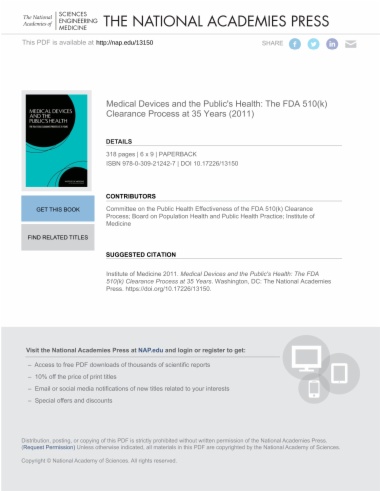

Medical devices that are deemed to have a moderate risk to patients generally cannot go on the market until they are cleared through the FDA 510(k) process. In recent years, individuals and organizations have expressed concern that the 510(k) process is neither making safe and effective devices available to patients nor promoting innovation in the medical-device industry. Several high-profile mass-media reports and consumer-protection groups have profiled recognized or potential problems with medical devices cleared through the 510(k) clearance process. The medical-device industry and some patients have asserted that the process has become too burdensome and is delaying or stalling the entry of important new medical devices to the market.
At the request of the FDA, the Institute of Medicine (IOM) examined the 510(k) process. Medical Devices and the Public's Health examines the current 510(k) clearance process and whether it optimally protects patients and promotes innovation in support of public health. It also identifies legislative, regulatory, or administrative changes that will achieve the goals of the 510(k) clearance process. Medical Devices and the Public's Health recommends that the U.S. Food and Drug Administration gather the information needed to develop a new regulatory framework to replace the 35-year-old 510(k) clearance process for medical devices. According to the report, the FDA's finite resources are best invested in developing an integrated premarket and postmarket regulatory framework.